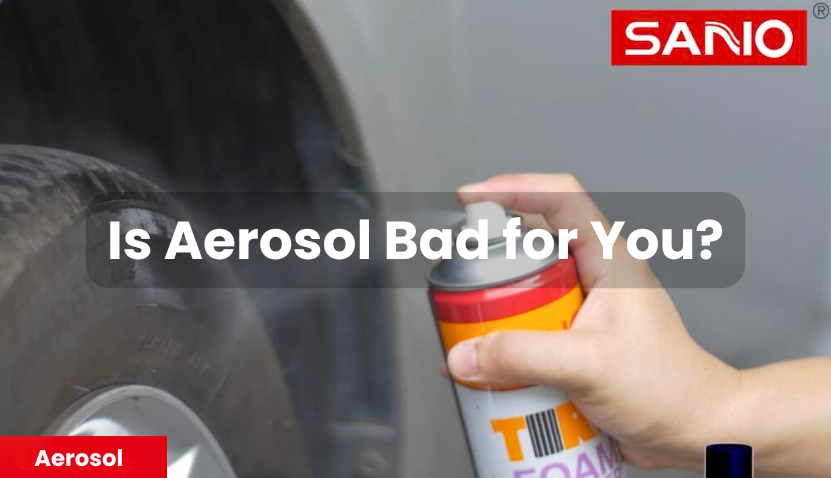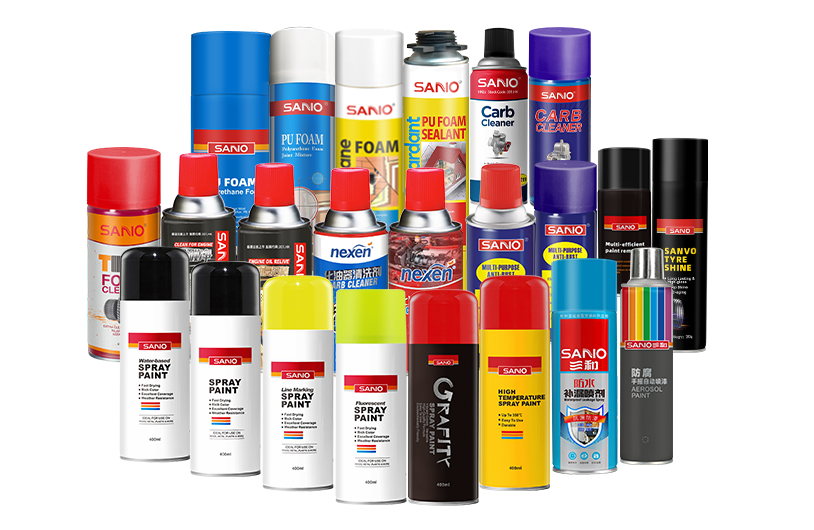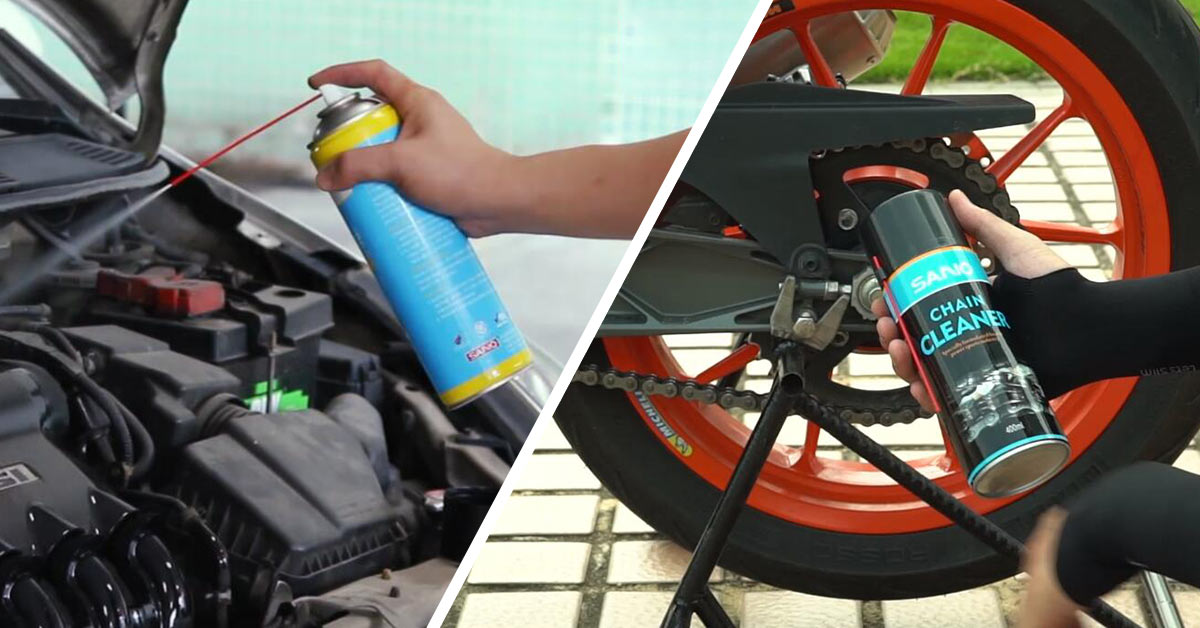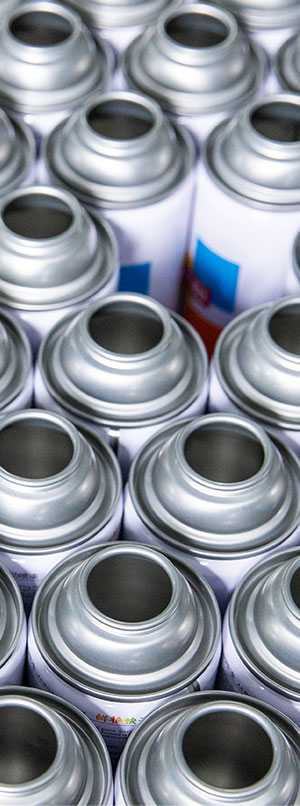In recent years, questions about aerosol safety like “Is spray-on deodorant bad for you?” and “Is aerosol deodorant bad for you?” have appeared frequently in public discussions. So, is aerosol bad for you?
The answer largely depends on its type, ingredients, and how it’s used.
To use aerosols safely, we must first understand them fully.

People’s main concerns about aerosol safety usually focus on two points: Are the high-pressure propellants inside the can dangerous? Can inhaling aerosol particles cause long-term health problems?
Aerosol
According to the Globally Harmonized System of Classification and Labelling of Chemicals (GHS):
An aerosol is a preparation in which active ingredients—liquid, solid, or gas—are sealed together with a propellant in a pressure-resistant container. Under the pressure of the propellant, these ingredients are released through a valve system in the form of a mist, foam, or gel.
Aerosols are widely used in medicine, cosmetics, household cleaning, industry, automotive, and agriculture due to their ease of use, precise dosing, and good storage stability.
Further reading: Can You Take an Aerosol Spray on an Airplane?
Classification of Aerosols

Aerosol products are everywhere in daily life—air fresheners, spray paints, rust inhibitors, insecticides, glass anti-fog sprays, and more.
Aerosols can be categorized based on use, spray form, or type of propellant.
1. By Use
Medical aerosols:
e.g., asthma inhalers (salbutamol aerosol), topical pain relief sprays, disinfectant sprays.
Cosmetic aerosols:
e.g., perfumes, hair sprays, sunscreen sprays, shaving foams.
Household aerosols:
e.g., air fresheners, insecticides, furniture polish, cleaning sprays.
Industrial aerosols:
e.g., lubricants, anti-rust sprays, mold release agents, paint sprays.
Automotive aerosols:
e.g., carburetor cleaners, tire inflators, automotive glass anti-fog sprays.
2. By Spray Form
Spray type:
Produces fine droplets, such as perfume or disinfectant sprays.
Foam type:
Releases foam, such as shaving cream or mousse.
Gel type:
Releases a viscous gel, such as certain medical dressings.
Powder type:
Releases fine powder, such as some hemostatic sprays.
3. By Propellant Type
Liquefied gas propellants (e.g., LPG, DME):
Remain liquid in the can and vaporize rapidly when released.
Compressed gas propellants (e.g., nitrogen, carbon dioxide):
Stay gaseous in the can and maintain constant pressure.
Is Aerosol Bad for You? – A Closer Look at Potential Risks
Note: Aerosols are classified as Class 2 dangerous goods (Gases) under the UN TDG regulations. Specific subcategories and secondary hazards depend on the contents of each aerosol.

Flammability • Explosion Hazard • Toxicity • Corrosivity • Environmental Hazard
Aerosol hazards can be divided into physical and health risks. Specific factors include chemical composition, improper use, and sensitivity in certain individuals.
(1) Physical Hazards
According to their flammability and heat of combustion, aerosols fall into three categories under the GHS system:
- Category 1: Extremely flammable aerosols
- Category 2: Flammable aerosols
- Category 3: Non-flammable aerosols
Aerosols often contain flammable organic solvents such as alcohol or liquefied petroleum gas (LPG). Such products are classified as Category 1 or 2.
Therefore, they must be kept away from heat, open flames, and impact, and should never be sprayed toward a fire source to avoid explosions or burns.
(2) Health Risks
Besides physical risks, aerosols can also pose health risks—including skin and eye irritation, acute toxicity, and chronic toxicity.
Fine aerosolized particles can easily enter the respiratory tract, making the effects of harmful aerosol chemical components on the lungs particularly concerning.
1. Ingredient Effects
Household aerosols (like insecticides or air fresheners) may contain volatile organic compounds (VOCs) or propellants such as propane or butane. Long-term inhalation can irritate the respiratory system or cause dizziness.
2. Improper Use
- Spraying directly toward the mouth or nose can cause choking or lung irritation.
- Failing to shake the can properly or using it upside down may lead to uneven distribution of active ingredients, reducing effectiveness or increasing risk.
3. Sensitivity in Specific Groups
Children, pregnant women, and asthma patients are more sensitive to aerosol components, which can trigger allergies or worsen pre-existing conditions.
* Lastly, some aerosols contain ozone-depleting substances (like the early use of CFCs) or VOCs, which can harm the environment.
Safe Use Tips – How to Use Aerosols Properly

1.Store aerosols in a cool, dry, and well-ventilated area. Avoid direct sunlight.
2.Keep away from fire, heat, static electricity, and impact.
3.Do not puncture or burn empty cans—residual propellants may explode.
4.Use only in well-ventilated areas. Keep at least 30 cm distance when spraying to avoid inhaling too much.
5.Follow product instructions carefully. Avoid contact with eyes and skin; if exposed, rinse with water for at least 15 minutes.
6.For household aerosols, choose low-VOC, non-irritant, or fragrance-free products with natural ingredients when possible.
7.Dispose of used cans as hazardous waste to prevent environmental pollution.
Conclusion
So, are aerosols harmful to the human body?
The answer isn’t simply “yes” or “no.”
Aerosols are widely used for their convenience, but their flammability, explosiveness, and toxicity indeed bring certain safety risks.
Understanding their classification and hazard levels helps ensure safe use and storage, reducing the risk of accidents.
SANVO – Professional Aerosol Solutions

In automotive repair and industrial maintenance, aerosols are key tools for efficient cleaning, lubrication, and coating. Since these products often contain strong solvents, choosing a reliable, safety-compliant brand is essential.
SANVO has over 20 years of experience in the automotive and industrial aerosol field.
We focus on developing high-performance aerosol products for car care and maintenance, emphasizing quality control and safety standards.
Visit our website for more information on our products.
Disclaimer:
Some content in this article is sourced from the internet, and copyright belongs to the original authors. If there are any copyright concerns, please contact us for verification, discussion, or removal.